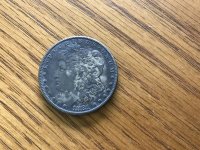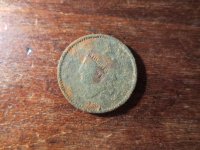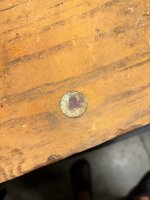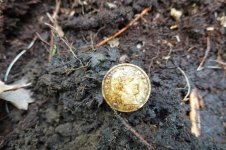cactusjumper
Gold Member
Roy,
"It is funny to me how you will 'laser-focus' on a flaw in any thing that supports Jesuit treasures and/or mines Joe, yet just seem to forget that even a Jesuit historian <one you hold in high regard> openly published that two Jesuits were caught being involved in mining, and this was a historian whom was only covering a relatively small area of the world, for the Jesuits operated world-wide and still do. I have to suspect that if you were to turn the same level of suspicion onto the Jesuits as you do onto all evidence showing their involvement in mining, treasures etc your view may well change."
To be fair, I focus in on available evidence. It's always possible, these days, that I have forgotten some details of my self education on Jesuit history but in this case, that's not the case. I have mentioned before that there is no doubt in my mind that some Jesuits crossed the line into limited mining.
At the time of their expulsion, I believe, there was one Jesuit priest who actually owned a mine. It was left to him by a wealthy patroness on her death. While he kept the mine, bad move, he did not work it. I have spoken (actually email) with Professor Deeds about that mine, and she has the same facts.
Keep in mind that I was as firm a believer in Jesuit mining and treasure as anyone here. It was only after decades of research that I became convinced otherwise. I know the arguments for the other side, and possibly a few more. IMHO, to say there is a paucity of evidence is being generous.
In almost every case, the evidence is "historical documentation" against, with legend and folkfore for. All physical evidence is non-existant, not available or questionable. In the last case, there are differing explanations other than Jesuit mining.
In every instance, a definitive case can't be made for Jesuit involvement.
Those are my personal opinions after considerable research, and my own time in the field. I can easily see how others could come to different conclusions.
Take care,
Joe
"It is funny to me how you will 'laser-focus' on a flaw in any thing that supports Jesuit treasures and/or mines Joe, yet just seem to forget that even a Jesuit historian <one you hold in high regard> openly published that two Jesuits were caught being involved in mining, and this was a historian whom was only covering a relatively small area of the world, for the Jesuits operated world-wide and still do. I have to suspect that if you were to turn the same level of suspicion onto the Jesuits as you do onto all evidence showing their involvement in mining, treasures etc your view may well change."
To be fair, I focus in on available evidence. It's always possible, these days, that I have forgotten some details of my self education on Jesuit history but in this case, that's not the case. I have mentioned before that there is no doubt in my mind that some Jesuits crossed the line into limited mining.
At the time of their expulsion, I believe, there was one Jesuit priest who actually owned a mine. It was left to him by a wealthy patroness on her death. While he kept the mine, bad move, he did not work it. I have spoken (actually email) with Professor Deeds about that mine, and she has the same facts.
Keep in mind that I was as firm a believer in Jesuit mining and treasure as anyone here. It was only after decades of research that I became convinced otherwise. I know the arguments for the other side, and possibly a few more. IMHO, to say there is a paucity of evidence is being generous.
In almost every case, the evidence is "historical documentation" against, with legend and folkfore for. All physical evidence is non-existant, not available or questionable. In the last case, there are differing explanations other than Jesuit mining.
In every instance, a definitive case can't be made for Jesuit involvement.
Those are my personal opinions after considerable research, and my own time in the field. I can easily see how others could come to different conclusions.
Take care,
Joe














